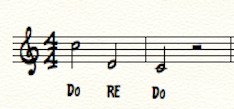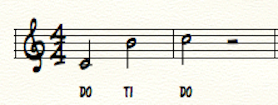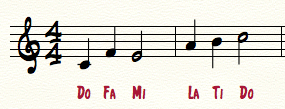Today’s video is the final lesson in my four part ear training series using the solfege scale.
In part one, (Solfege- A Beginner’s Guide), we covered how to move around the scale in stepwise motion (going from one note to either of its neighbors). For example:
In part two, (Solfege Exercises For Singers) I taught you how to hear and practice a major triad. Do-Mi-Sol

In part three, (Train Your Ear With Solfege Syllables) I gave you two exercises to practice hearing syllables Re & Ti


Now in part four, we’re going to practice the most difficult pitches to hear in the major solfege scale- Fa & La.
What’s the point of learning and practicing the solfege scale?
1.)Developing a good ear. Practicing ear training exercises is the best way to sing more in tune. Even if you already have a good ear, refining your ears can be the difference between being a good singer and a great one. With a trained ear, you will also be able to learn melodies faster, sing harmonies better and even write more interesting melodies & songs. It’s a musical win across the board.
2.)Sight singing. Have you ever wanted to be able to look at a piece of music and sing it without any help? Before you can read & sing notes off a page, you have to be able to hear them. You need to know what it sounds like to jump from Do to Fa to Ti before you can sight sing those pitches from a piece of music.
Other skills are needed as well for sight singing- knowing the names of the notes on the staff & being able to read rhythmic values (eighth note, quarter note etc…). I’ll be covering all of these subjects in future lessons.
How To Practice
Sing along with the exercise in the video (written above) until you’ve got it. Then, make a solfege chart like the one I have in the video and practice jumping around the scale. If you have trouble with an interval, let’s say Do to Fa, play the troublesome note for yourself on a piano or virtual keyboard until you hear it and can sing the interval by yourself.
Enjoy expanding your ears!








Leave A Response